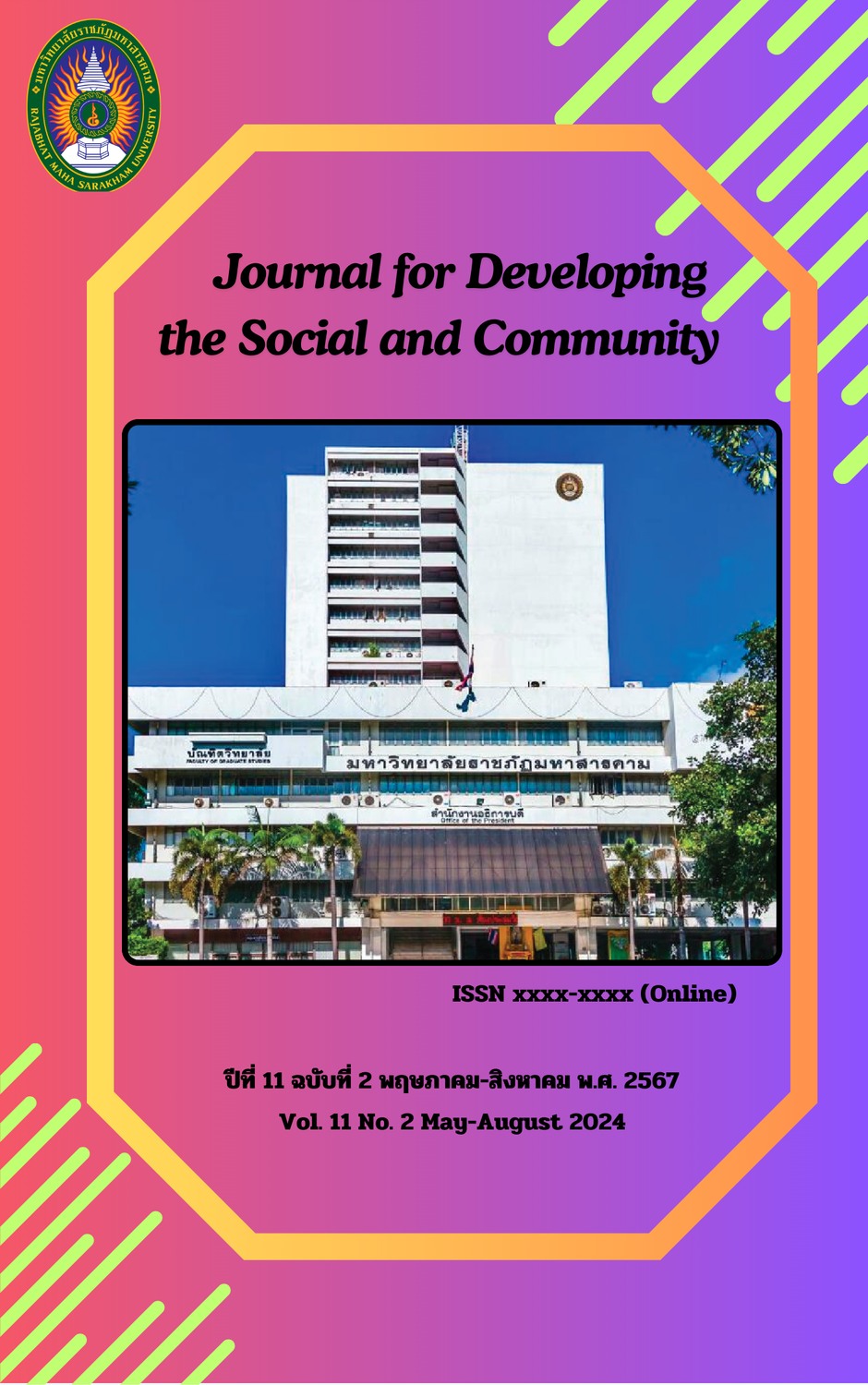A Study of Geometric Thinking with Spatial Sense of Matthayomsuksa 3 Students
Keywords:
Geometric Thinking, Spatial SenseAbstract
The objectives of this research were (1) to study the level of geometric thinking of Mathayomsuksa 3 students, (2) to study the spatial sense level of Mathayomsuksa 3 students, (3) to study the relationship between geometric thinking and the spatial sense of Mathayomsuksa 3 students. The target group of the research was Mathayomsuksa 3 students, 3 classes, 81 students, Tha Khon Yang Pittayakom School. Tha Khon Yang Subdistrict Kantharawichai District Maha Sarakham. The research tools were a geometric thinking test, a spatial sensation test, and a semi-structured interview about geometry and spatial sense. Statistics used in data analysis were frequency, percentage, Pearson's simple correlation coefficient. The case study method was used to present the data by descriptive analysis.
The results showed that (1) the geometric thinking of Mathayomsuksa 3 students was mostly at the level 2 Informal Deduction, representing 46.91%, (2) the overall spatial sense level was at a moderate level, representing 76.54 percent (3) the relationship between geometric thinking and spatial sense of Mathayomsuksa 3 students were very correlated. The correlation coefficient was .798 and from the interviews it was found that students with level 0 Visualization of geometric thinking were able to tell types of geometric shapes but not clearly. can tell the characteristics of geometric shapes but are not clear Tell different geometric shapes by their type. and still unable to explain what is the same or different Students with Level 1 Analysis Geometric Concepts can identify the types of geometric shapes. cannot clearly describe the characteristics of geometric shapes Students with Level 2 Informal Deduction Geometric Minds can identify the types of geometric shapes. Explain the characteristics of geometric shapes clearly. Tell the difference between geometric shapes. Students with Level 3 Formal Deduction Geometric Thinking can identify the types of geometric shapes. Explain the characteristics of geometric shapes clearly. tell the differences of geometric shapes in detail can give examples of similar images And can also describe things that are the same or different.
References
Crowley, M. L. (1987). The van Hiele model of the development of geometry thought. In M. M.Lindquist and A. Shulte (eds.), Learning and teaching geometry, K-12, pp. 1-16. Reston, Virginal: NCTM.
Department of Academic Affairs. (2002). Handbook for learning management in mathematics. Bangkok: Teachers Council Ladprao Printing House.
Institute for the Promotion of Teaching Science and Technology. (2003). Mathematics skills and processes. (3rded). Bangkok: 3-Q Media.
Institute for the Promotion of Teaching Science and Technology. (2008). Mathematical Skills/Processes. Bangkok: Teachers Council Ladprao Printing House.
Komvong, N. (2019). A Study of Geometric Thinking Levels about three dimensiongeometric with Problem Solving for sixth grade students. Master of Education (Mathematics Education): Rajabhat Maha Sarakham University.
Lakkumpan, J. (2018). Study of Mathematical Problem Solving Performance for Grade 9 St with Different Spatial Sense Levels at Wapipathum School, Wapipathum, Mahasarakham. Master of Education (Mathematics Education): Rajabhat Maha Sarakham University.
Piromkraipak, W. (2018). A Study of the Concept of the Square of Lower Secondary School Students According to Geometric Thinking of the Van Hiele Model Master of Education (Mathematics Education): Rajabhat Maha Sarakham University.
Promket, N. (2018). The Study Relation between Number Sense and Spatial Sense in Mathayomsuksa 1-Students. Master of Education (Mathematics Education): Rajabhat Maha Sarakham University.
Thipkong, S. (1993). Van Healy Model of Sequential Learning for Geometry. Mathematics Journal, 5(420 – 421), 43 - 55.
Van Hiele, Pierre M. (1984). A Child's Thought and Geometry. In English Translation of Sritings of Dina Van Hiele-Geldof and Pierre M. Van Hiele, edited by Goddess, and R.W. Tischler, 1959/1985. Brooklyn: Brooklyn College.
Downloads
Published
How to Cite
Issue
Section
License
Copyright (c) 2024 Journal of Research and Development Institute Rajabhat Maha Sarakham University

This work is licensed under a Creative Commons Attribution-NonCommercial-NoDerivatives 4.0 International License.
Articles that are published are copyrighted by the authors of the articles







